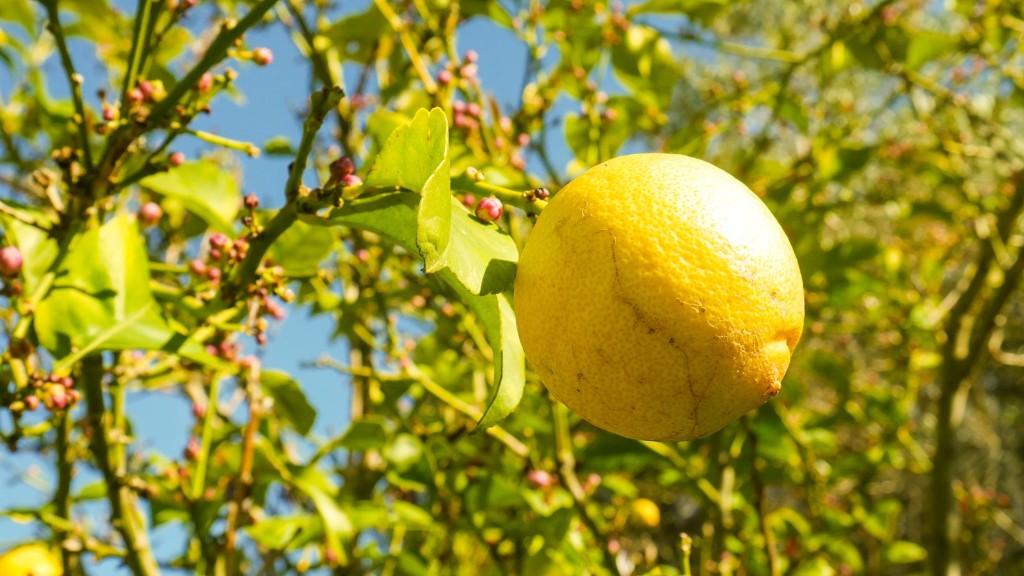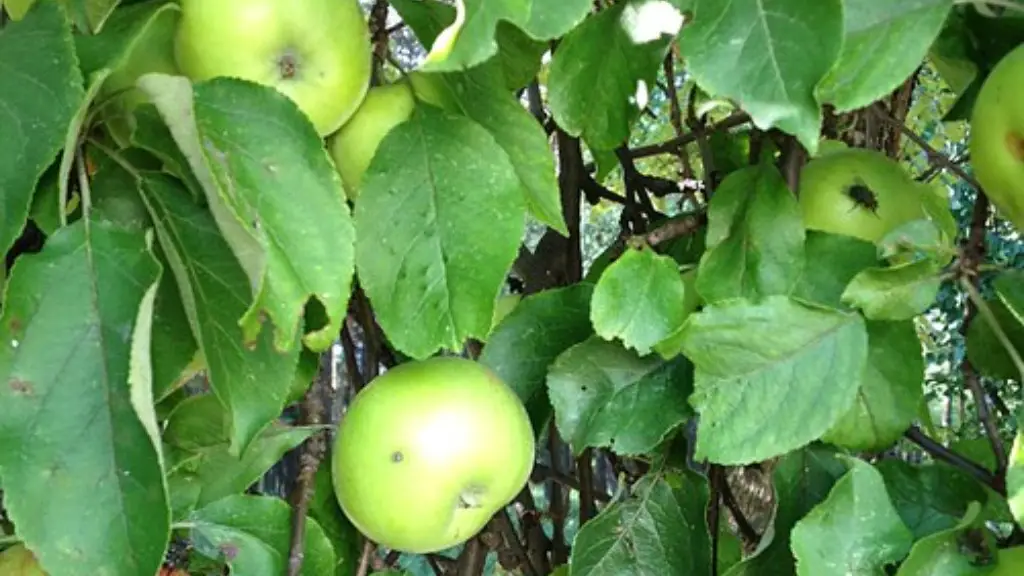Lemon trees are a unique fruit tree, needing very specific levels of soil moisture in order to remain healthy and produce abundant bounties of fruit. Watering lemon trees can be tricky as it is possible to both underwater and overwater the plants. One of the main questions that people unfamiliar with indoor gardening ask is: “Can you over water a lemon tree?” The answer is yes, the lemon tree can be overwatered and it can lead to serious root damage or even death if not taken care of.
Generally speaking, lemon trees should be watered when the soil is dry to the touch. Placing your finger into the soil is a general way to check the soil moisture level. Depending on the size of the tree and the pot, you should water it until the first trickle of water appears at the drainage hole. The amount of water will vary, so direct experience is key in correctly watering the lemon tree. That being said, even if you use the finger test method to check the moisture level and water accordingly, it is possible to overwater the lemon tree.
Overwatering will cause the roots to become water-logged and unable to take in nutrients or oxygen. This will eventually lead to a decrease in the tree’s productivity and an increase in pests, disease and rot issues. Symptoms such as yellowing leaves, drooping branches and a decrease in flowering or fruiting are often indicative of overwatering. If a lemon tree is over watered, its best to let the soil dry out and then reduce the amount of water given to the tree.
In addition to constantly overwatering a lemon tree, it is also possible to overwater the tree when the temperature is extremely hot or if the tree is pot-bound. In extreme temperatures or when the pot is too small, the water evaporates quickly and the soil may become dry too quickly. This means that too much water is given to compensate and the tree can become over-hydrated. Furthermore, if the pot is too large, the tree will require more water, as the amount of soil has increased and the water can leach through quicker.
It is important to note that the amount of water given to the lemon tree will vary depending on its size, age, the type of soil and the area it is grown in. Smaller trees will require less water, but will still require watering. If the soil is loamy or sandy, the tree will require more water compared to a heavier soil. Colder temperatures will also mean the tree will take longer for the soil to dry, so you should reduce the amount of water given to the tree. Ultimately, it is best to use the finger test regularly to avoid overwatering your lemon tree.
Preventing Overwatering
The key to preventing over watering a lemon tree is to check the soil moisture with your finger. It is often a general guideline that you should water your lemon tree when the top inch of soil is dry to the touch. This will help to ensure that the tree is getting the necessary amount of water while avoiding potential root rot. Additionally, soil testing devices such as a moisture meter can help to accurately measure the moisture levels in the soil and therefore determine if the tree needs to be watered.
Additionally, when watering the lemon tree, it is important to not water too quickly or let water sit in the planter for too long, as this can lead to a buildup of water and create an anaerobic environment for the roots. If the pot has a drainage hole at the bottom, then you should let most of the water drain through before discarding it. There should not be any standing water in the pot, as this can stagnate and cause root rot.
By following the basic guidelines when watering your lemon tree, you can successfully avoid root rot and overwatering. If a lemon tree is over watered, proper drainage is key and the pot should be repotted with the necessary soils, and the amount of water given should be reduced.
Detecting Overwatering
When watering a lemon tree, it is important to be aware of the signs of overwatering the tree. The most obvious sign of overwatering any plant is yellowing of the leaves and wilting of branches. This phenomenon occurs when the soil is too damp and does not provide the necessary oxygen for the roots to take in the nutrients. Furthermore, there might be an increase in pests and other diseases, as the soil will be ideal for their growth over the root system of the plant.
Additionally, when overwatering a lemon tree, fungal and bacterial disease can become a major issue. Fungal and bacterial diseases usually don’t show any visible symptoms, but the plants will start to become weak and it is best to act immediately. Bacterial diseases usually start on the leaves, stems and branches of the tree, while fungal issues start near the root system or lower parts of the tree.
It is best to catch symptoms of overwatering early as it can be easily reversed, as opposed to waiting too long. If a tree is starting to show signs of overwatering, then the best course of action is to stop watering it and let the soil dry out before watering it again. After letting the soil dry out, use the finger test to tell when the tree needs water again, and be aware of any possible amendments you might need to make.
Ideas for Limiting Overwatering
To ensure that your lemon tree will not be overwatered, there are various ways to reduce the chances of this occurring. It is important to only water the tree when the soil is dry to the touch, usually the first inch below the surface. Additionally, the pot size must not be too small as this can cause water to evaporate quickly and lead to roots sitting in soggy conditions. Furthermore, the pot should not be too big, as the soil will require more water and it may become too difficult to maintain the correct moisture levels.
The soil should also be the correct type, enabling water to drain through quickly while still holding moisture in the upper layers. Generally, potting soils with an equal mixture of soil, compost, peat and perlite are suitable for lemon trees. Furthermore, the environment should be taken into consideration when watering the tree. If it is especially hot, then water should be given more frequently, as the water will evaporate quicker in hot temperatures. Additionally, if the tree is aggressively producing fruit, then more water should be given.
It is also important to water the tree thoroughly rather than lightly, as this encourages deeper root growth. Once the tree has been watered, then the surplus water should drained out at the drains located at the bottom of the pot. Overwatering can be avoided by following these simple steps and monitoring the moisture regularly with the finger test.
Proper Maintenence
In order to properly maintain a lemon tree, it is important to create a watering schedule. Knowing when to water the tree will help to ensure that the tree is not overwatered, as regular checks can be done. Regular pruning should also be done, and all withered, diseased, dead or dying branches should be cut off in order to promote the growth of healthy new branches. Additionally, it is important to rotate the pot every few weeks, as this will encourage even growth of the tree. Furthermore, fertilization should be done regularly, as this will help to keep the tree healthy and productive.
It is also important to keep the leaves and bark of the tree clean. Spider mites, aphids and sticky honeydew can be present and can hinder the growth of the tree. Applying a basic insecticidal soap or horticultural oil can help to control these pests. Furthermore, it is important to keep the area around the lemon tree free from leaf litter and weeds, as these can spoil the growth of the tree.
Additionally, it is important to be aware of the diseases that can affect lemon trees. Anthracnose, canker and scab are some of the most common diseases that affect lemon trees. Proper sanitization and removal of dead or dying branches can help to decrease the chances of disease. Treatment of these diseases should be given if symptoms become evident, or it is best to contact a horticultural specialist if unsure.
Conclusion
In conclusion, it is possible to overwater a lemon tree if the correct guidelines are not followed. The key is to use the finger test to regularly check the soil moisture levels and to ensure that the pot size, soil type and temperature of the environment is suitable for the tree. If the tree is showing any signs of overwatering, then the soil should be allowed to dry out and the amount of water given should be reduced. Additionally, proper maintenance is key to keep the lemon tree healthy and producing an abundant harvest.



